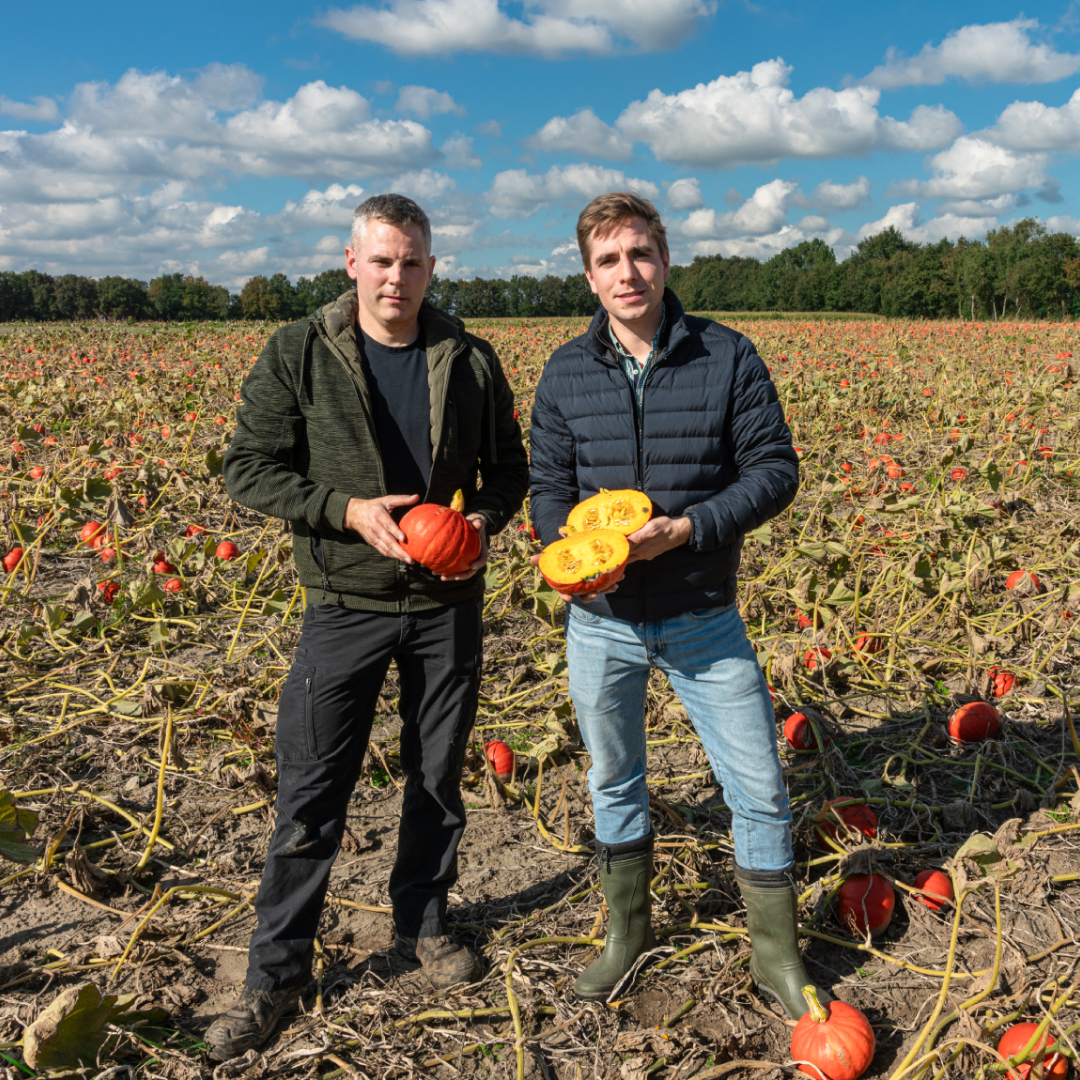Sustainability in action: How we grow EXBERRY® pumpkins
Sustainability is at the heart of everything we do at GNT. Ethical food sourcing is not just about protecting the environment – it’s about ensuring we can grow colorful crops for our customers for generations to come. Our pumpkins, which provide vibrant, stable yellow shades, are a perfect example of how we are putting this commitment into practice. We visited farmer Koen’s pumpkin fields for a look behind the scenes.
Long-term partnerships rooted in sustainability
Local sourcing in agriculture is a key sustainability issue. Around 80% of the fruits, vegetables, and plants we use to create EXBERRY® colors are grown in farms within a 200-kilometer radius of our factories. By minimizing transportation distances, we can significantly cut CO2 emissions while ensuring the freshest possible ingredients.
Having close working relationships with farmers and working on long-term supply partnerships also helps us to ensure sustainable, ethical agriculture. Koen’s farming family has been growing pumpkins for us for over 30 years in fields close to our factory. As a family-owned company ourselves, we have an innate appreciation of the importance of long-standing, multi-generational collaboration. It’s an excellent way to ensure supply-chain reliability, giving both our farmers and customers peace of mind in an industry where trust and consistency are key.
This approach also ensures full traceability and means we know exactly how our pumpkins are grown. It has the additional benefit of allowing us to calculate the environmental impact of our natural pumpkin colors across the entire supply chain, enabling us to provide our customers with reliable carbon footprint data.
Certified for quality and responsibility
Sustainability is also about maintaining the highest standards of food safety and farming practices.
Koen’s pumpkin farm has held Global GAP and GRASP certifications for many years. Global GAP certification enables farmers to guarantee that their crops are grown according to the highest food safety and sustainability standards, while GRASP ensures fair working conditions.
We also work with the Farmer Sustainability Assessment (FSA), a checklist that gives us a framework for assessing the sustainability of our cultivation practices.
Going the extra mile for eco-friendly food production
Our sustainability plans contain 17 ambitious targets for 2030. One of these goals is to increase the color intensity of our key crops, including pumpkins, by 30% compared to 2020. By doing so, we can reduce land use and optimize resource efficiency to further minimize our environmental footprint.
Our pumpkin farmers grow varieties that are more resilient to climate change than other variants and contain more color per kilogram of weight. In allowing us to do more with less, this approach helps us to make our raw materials as sustainable as possible as well as ensuring we futureproof our pumpkin crops.
Looking ahead, we will continue collaborating with our farmers to refine our sustainability practices. For example, at Koen’s pumpkin farm, the washing facility is now powered entirely by electricity from solar panels too, making the entire process carbon-neutral. Furthermore, the forklifts are powered by the same renewable energy, reducing the carbon footprint even further.
Growing more than just crops
At GNT, sustainability isn’t just about how we grow our fruits, vegetables, and plants – it’s about growing trust. We are committed to full transparency, empowering our customers with the knowledge they need to create products that align with consumer values while maintaining a reliable, sustainable supply chain.
By continuously improving our agricultural practices, reducing our carbon footprint, and investing in our farmers and innovative solutions, we can help you create more sustainable products – one vibrant pumpkin at a time.
Get more insights into our goals, actions and progress on our sustainability journey so far >


